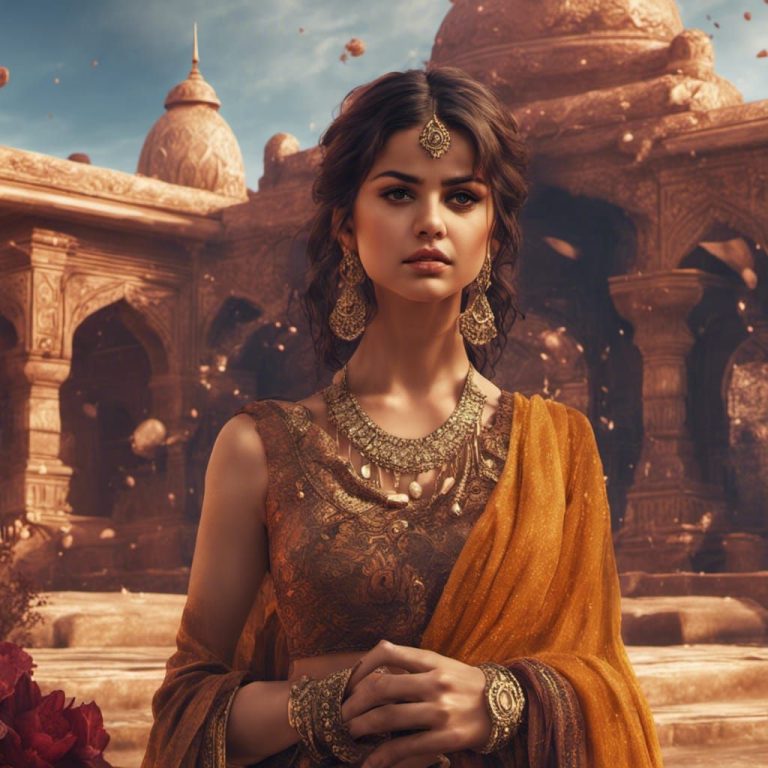Hindu Vs Jewish: Exploring Cultural Differences
Have you ever wondered about the fascinating differences and surprising similarities between Hinduism and Judaism? These two ancient religions hold rich histories, unique traditions, and profound philosophies that have shaped countless lives and cultures.
By exploring the core beliefs, practices, and cultural impacts of Hindu and Jewish faiths, you gain a deeper understanding of how these religions influence the world around you. Whether you’re curious about spiritual concepts or cultural rituals, this article invites you to discover the intriguing contrasts and connections between Hinduism and Judaism.
Prepare to dive into a world where diversity meets spirituality, and uncover insights that might just change the way you view religion.
Historical Background
Hinduism is one of the world’s oldest religions. It began over 4,000 years ago in the Indus Valley. This area is now part of India and Pakistan. The religion has no single founder. Instead, it grew from ancient traditions and texts. These texts are called the Vedas. They include many stories and teachings. Hinduism is known for its many gods and goddesses. People believe in karma and rebirth. They also practice yoga and meditation.
Judaism started in the Middle East over 3,000 years ago. It began with a man named Abraham. He is known as the father of the Jewish people. Jews believe in one God. Their holy book is the Torah. This book contains laws and teachings. The religion has many important traditions. These include celebrating the Sabbath and Passover. Jewish people also pray in synagogues. They have a strong sense of community and history.
Religious Beliefs
Hindus believe in many gods. This is called polytheism. Each god has special powers. Brahma creates the world. Vishnu protects the world. Shiva destroys to recreate. All gods are part of one main god. This main god is called Brahman. Hindus pray to many gods. They offer flowers and food. Temples are special places for worship. Each temple has a main god. This god is worshipped by many people.
Jews believe in one god. This is called monotheism. The god is known as Yahweh. Yahweh is powerful and kind. He created the world in six days. Jews pray to Yahweh every day. Torah is their holy book. It has rules given by Yahweh. Synagogues are places for Jewish prayer. Jews gather here to worship. They sing and read from the Torah. They follow Yahweh’s teachings closely.
Sacred Texts
The Vedas are ancient Hindu texts. They are written in Sanskrit. They include hymns, prayers, and rituals. The Vedas are divided into four main parts. These parts are Rigveda, Samaveda, Yajurveda, and Atharvaveda. The Upanishads are a later addition. They focus on philosophy and meditation. They explore deep ideas about life and the universe. They help people find spiritual wisdom.
The Torah is the Jewish sacred text. It is also known as the Pentateuch. It contains the first five books of the Bible. The Torah is written in Hebrew. It tells stories of creation, laws, and history. The Talmud explains and discusses the Torah. It helps Jewish people understand their laws and traditions. The Talmud is a collection of teachings and interpretations.

Credit: www.ajc.org
Rituals And Practices
Hindu and Jewish rituals reflect deep cultural roots and spirituality. Hindu practices often involve vibrant festivals and temple rituals. Jewish traditions include Sabbath observance and Passover celebrations. Both traditions emphasize community and family, nurturing connections through shared beliefs and practices.
Hindu Rituals
Hindus celebrate many festivals. Diwali is a major festival of lights. Holi is known as the festival of colors. Puja is a worship ritual done at home or temple. The Ganges River is sacred. People bathe in it for purification. Yoga and meditation are common practices. Hindus often fast on special days. Aarti is a light ceremony during prayers. Mantras are chanted for blessings. Holy books guide rituals.
Jewish Traditions
Jews observe the Sabbath from Friday evening to Saturday night. Passover celebrates freedom from slavery. Yom Kippur is a day of fasting and prayer. Hanukkah celebrates the miracle of the oil. Bar Mitzvah is a coming-of-age ceremony for boys. Bat Mitzvah is for girls. Kosher dietary laws are followed. Rosh Hashanah marks the Jewish New Year. Seder is a ritual meal during Passover. Torah is read in synagogues.
Festivals And Celebrations
Hindus celebrate many festivals. Diwali is the festival of lights. People light lamps and burst fireworks. Holi is the festival of colors. People throw colors at each other. Navratri is nine nights of dancing and music. People wear colorful clothes and dance in circles. Raksha Bandhan is the festival for brothers and sisters. Sisters tie a band on their brother’s wrist. Eid is celebrated for the end of fasting. People pray and have feasts with family and friends. Every festival is full of joy and tradition.
Rosh Hashanah is the Jewish New Year. Families eat sweet foods like apples and honey. Yom Kippur is the Day of Atonement. People fast and pray for forgiveness. Hanukkah is the festival of lights. Families light a special candle holder called a menorah. Passover celebrates freedom from slavery. People eat special meals called Seder. Purim is a joyous holiday with costumes and parades. Each holiday has unique customs and stories.

Credit: www.ajc.org
Social Structure
The caste system is a big part of Hindu society. People are born into different groups. These groups are called castes. Some castes have more power than others. The Brahmins are priests. They are at the top. The Kshatriyas are warriors. They protect the people. The Vaishyas are traders. They do business. The Shudras are workers. They do jobs like farming. People follow rules based on their caste. It affects their lives a lot.
The Jewish community does not have a caste system. Family and faith are very important. People often gather in synagogues. They pray and learn together. There are many Jewish traditions. These include festivals like Passover and Hanukkah. The community values education. Many Jewish people study a lot. They learn about their history and religion. This helps them stay close to their roots.
Dietary Customs
Many Hindus follow vegetarian diets. They avoid eating meat and eggs. Some also avoid garlic and onions for spiritual reasons. Dairy products are usually allowed. Lentils and beans are popular protein sources. Fresh vegetables are a staple in meals. Offerings to gods are a part of meal preparation. Traditional spices add flavor and health benefits. Food is considered a gift from God. Cooking is a sacred act.
Kosher laws define acceptable foods for Jewish people. Meat and dairy must not be mixed. Kosher meat comes from specific animals. It must be prepared in a special way. Fish must have fins and scales. Shellfish is not allowed. Fruits and vegetables are usually kosher. Processed foods need a kosher label. Kosher kitchens have two sets of dishes. These laws are followed for spiritual purity.

Credit: hinduperspective.com
Symbols And Iconography
Hindu symbols are rich and colorful. Om is a sacred sound. It represents the universe. Lotus symbolizes purity and beauty. Swastika is a sign of good fortune. It is ancient and important. Trident is linked with Lord Shiva. It stands for power. Peacock represents patience and kindness. Cow is holy and respected. Bindi is worn on the forehead. It shows wisdom and spiritual sight. Ganesha is the remover of obstacles. His image is widely worshipped.
Jewish symbols have deep meanings. Star of David is a common sign. It stands for Judaism. Menorah is a seven-branched candlestick. It symbolizes light and knowledge. Chai means life. It is often seen on jewelry. Mezuzah is placed on doorposts. It holds sacred verses. Hamsa is a hand-shaped symbol. It offers protection. Kippah is a cap worn by men. It shows respect to God. Shofar is a ram’s horn. It is blown during special times. Tallit is a prayer shawl. It is worn during services.
Influence On Art And Culture
Hindu art is rich and colorful. Temples are full of detailed carvings. Sculptures show gods and heroes in action. Paintings use many bright colors. They tell stories from ancient texts. Music and dance are important too. Classical dance forms are graceful and expressive. Each dance tells a story. Hindu festivals are lively and artistic. They include dance, music, and art. These celebrations show the richness of Hindu culture.
Jewish culture has a long history. Books and writings are important. They teach values and history. Jewish music is diverse and meaningful. Songs often reflect stories and traditions. Art includes many symbols. The Star of David is well-known. Jewish festivals are full of customs. They celebrate history and faith. Food is a big part of Jewish culture. Special dishes are made for holidays. Traditions are passed through families. They keep the culture strong and alive.
Contemporary Relevance
Hinduism is followed by many people today. It is an ancient religion with rich traditions. People celebrate many colorful festivals. Diwali and Holi are popular. The temples are places for prayers and gatherings. Many Hindus live in India and other countries. They share their culture with the world. Yoga and meditation come from Hindu teachings. These practices help people find peace.
Judaism is an old faith with deep roots. Many Jewish people live around the world. They keep their traditions alive. Hanukkah and Passover are key festivals. Synagogues are places for worship and community. Jewish teachings focus on kindness and learning. Hebrew is a special language for prayers. Jewish culture includes music, art, and stories. It is important to the world today.
Conclusion
Exploring Hindu and Jewish beliefs reveals rich histories and diverse traditions. Both religions offer unique worldviews and cultural practices. They emphasize values like compassion, community, and spiritual growth. Their ancient teachings have shaped societies for centuries. Understanding their differences and similarities deepens our respect for cultural diversity.
Every belief system contributes to the colorful tapestry of human experience. Learning about each enriches our knowledge and broadens our perspectives. Embracing diversity fosters harmony and mutual respect. We grow stronger by appreciating the varied paths of faith that guide people across the globe.



